Media | Articles
The Free-Thinking Genius of Helene Rother and Nash Motors
This article first appeared in Hagerty Drivers Club magazine. Click here to subscribe and join the club.
Little Nash Motors up in Kenosha, Wisconsin, came roaring out of World War II with some pretty far-out ideas. Its cars became sleeker and more interstellar, the wheels all but disappearing within wind-smoothed bodywork. The company defied convention by building a premium car that was actually small. The Rambler of 1950 was America’s first legitimate attempt at a compact alternative to the road-conquering Goliaths then in fashion. And Helene Rother, a pioneering female designer whose own story reads like an impossibly dramatic screenplay, played a key role in making it happen.
Rother’s might not be a name with which you’re familiar, but at a time when men universally ruled the auto industry, she was part of a small female vanguard that was destined to quietly put its fingerprints on American car design in the 1940s and ’50s. Notwithstanding her recent induction into the Automotive Hall of Fame, Rother’s achievements are mostly forgotten today. But in an era when small cars were not popular, her interior design for the Rambler was incredibly forward-looking and helped make this car fashionable—and, for a time, successful.

Which is why we took the opportunity to borrow an early Rambler from owner Scott Keesling in Beverly Hills, California, and, er, ramble around the city’s leafy canopied streets for a day. This joyful little car wasn’t made for speedy 0–60 times, nor did it perform aggressively around corners. Its name, Rambler, certainly doesn’t suggest quickness. Instead, it feels genial and easygoing, like spending time on a warm, sun-filled afternoon with an old friend.
***
An unlikely automotive designer, Helene Rother spent her early life a million miles away from Beverly Hills, in Leipzig, Germany, surrounded by books and art. After receiving the equivalent of a master’s degree in 1930 from the Kunstgewerbeschule, an arts and crafts school, in Hamburg, the newly married Rother began a career in visual arts and graphic design. After her daughter was born in 1932, Rother’s husband, a known Trotskyist and a member of various anti-Nazi organizations, soon became persona non grata in Hitler’s Germany and fled to France, leaving Rother and their daughter, Ina, behind.
Marketplace
Buy and sell classics with confidence
Rother continued working in design and art, even finding some success in jewelry design before the situation in Germany became untenable. Her connection to her husband put her in danger, and she decided to take her daughter and flee. A group of Americans who had formed the Emergency Rescue Committee shortly after France fell to the Germans sent Rother an alias, counterfeit identification, and $400 to get her to Marseilles. With travel from France to the United States severely restricted, Rother and Ina made their way to Casablanca, just as the refugees did in the famous film of the same name, to await safe passage to New York.
As the war raged on, Rother never quite settled into living in New York City. Still, she found a job as an artist and started designing geometric-patterned textiles in the style of Le Corbusier and Bauhaus, a school of European minimalism that produced architecture and objects that were practical and devoid of traditional baroque flourishes. She wrote and illustrated many children’s books that were never published and drew illustrations for Marvel Comics.

During the war, everyone did their best to get by, including car companies. With a former refrigerator salesman and car man by the name of George W. Mason running the show at Nash-Kelvinator, the company did its American duty. Instead of building powertrains for its moderately successful Ambassador Eight and Ambassador 600, it got to producing supercharged radial engines for naval aircraft. While automotive production was put on hold, in anticipation of the inevitable return to normal, Mason—a known risk-taker—never stopped new car development during those war years, including a $20 million project for a compact sedan that eventually became the Rambler.
In 1942, Rother heard about an opportunity in Michigan to work for Harley Earl, the first vice president of styling at General Motors. Though the General had never hired a female designer before, much less one with radical ideas, Earl was a visionary who was seeking out like-minded creatives, regardless of their gender. According to MaryEllen Green, another of Earl’s so-called Damsels in Design—a group of female designers whom he hired after bringing Rother on board—some GM suits wanted to keep secret the hiring of any women above the secretarial level, fearing that bringing them into such a masculine industry would be a failure and an embarrassment for GM. Regardless, Rother got the job and moved to Detroit with her daughter.
“I earned less than the men I supervised,” Rother is remembered as once saying to a group of stained-glass artists. Despite her dissenters, Rother put her artistic mark on the interiors of Cadillacs, Buicks, and Pontiacs, to name a few.


Rother turned contemporary interiors once dreary shades of black, gray, or tan into explosions of color, elegance, and convenience. “I have a long list of gadgets for use in cars beginning with outlets for heating baby bottles and canned soup, cigarette lighters on springs, umbrella holders, and so on,” Rother once wrote. Collectively, the Damsels, the pioneering women of car design, incorporated intuitive innovations, everything from improved gauge positioning to tissue dispensers. They spiced up cabins with flashy finishes and textured fabrics in the kaleidoscopic colors of an Elizabeth Arden cosmetics portfolio. As more women worked, drove, and were involved in the buying of cars, the Damsels helped GM move with the changing times.
In 1947, while still at GM, Rother started her own design studio, opening the door to her consulting for other automakers including Nash, who went on to become her main client. Rother designed seats, molding, garnish, trim pieces, and fabrics. She did extensive work on all the interiors of the revolutionary Airflyte models. The Statesman was her triumph, as she used artistic design elements incorporating color, fabrics, and texture throughout.

Statesman buyers could choose from 21 color combinations with well-considered trims and finishes. The Statesman’s interior drew particular interest for its revolutionary seating configurations. The right front seat reclined into a comfortable daybed. Fully reclined, it became a twin bed. With the addition of the driver’s seat fully reclined, the cabin became a private sleeping car. Sales skyrocketed.
***
As her work gained more recognition, Rother’s prominence in the automotive industry grew. In November 1948, she became the first woman to address the Society of Automotive Engineers with a paper titled, “Are we doing a good job in our car interiors?” She inherently knew that part of the pleasure of driving a car was a driver’s interaction with the cockpit. “The instrument board of a car,” she wrote, “shows above anything else how well-styled the car is. Here the driver is in real contact with the mechanics, and here is the greatest test of good coordination between the engineer and stylist.”
Always on the hunt for what came next, Mason had been captivated by the stylish but practical designs of Italian coachbuilder Pinin Farina, as seen on the likes of Lancias, Alfa Romeos, and Maseratis, as well as the compact Cisitalia 202. This small, unfussy, yet elegant sedan likely piqued Mason’s attention, reinvigorating his $20 million wartime development idea. The time was finally right for a smaller car in the Airflyte’s lineup.

When it came time to design the body of the Rambler, there was no exterior team to speak of, as a proposed deal with Pinin Farina had not yet borne fruit. So, the company’s longtime engineers—including Nils Erik Wahlberg, who didn’t even believe in the compact car project, plus Ted Ulrich, and Meade Moore—were put to the task with only some loose design studies to work from, submitted by an independent design firm. These engineers put together a workable exterior that cribbed elements from the opulent Ambassador only in a scaled-down and more utilitarian way. At the same time, they improved mechanical issues with novel design solutions, including side air scoops to cover the connection between the fenders and the cowl. In testing, they found that the battery was 3 percent cooler than it had been previously, as it sits on the driver’s side just below the new air vent.
The Rambler, which was strongly supported by both Georges—George W. Mason and his newly hired protégé, George Romney—finally came along in 1950. As America’s postwar economy boomed, Mason and Romney saw an opportunity to put a second car in every garage. Smaller than the traditional family car but no less stylish, the Rambler was brilliantly marketed as a luxurious purchase. Certainly, there was nothing compact about its official name, the Nash Rambler Custom Convertible Landau.

Although it was smaller, the $1800 Rambler was priced several hundred dollars higher than its nearest competitors at Ford or Chevrolet. This strategy was put in place to make buyers feel as though they weren’t simply settling for a cheap, small car. Customers got a good deal for their money. In addition to Rother’s stylish interiors—which Nash promoted heavily as the work of “Madame Helene Rother of Paris” to make her sound more European—the all-new Rambler was initially only offered as a convertible and featured many standard amenities, including a radio, a heater, and whitewall tires.
The two-toned, brightly colored orange and white of the example I drove—not original—made an excellent effort of recreating what might have been an available Rother colorway. But Rother’s design was not merely stylish. The glass over the center gauge, for example, was concave, a shape that redirects light to a center focal point, which makes the driver’s information easier to see while at the same time reducing glare—rather important for a convertible. The Rambler’s interior not only looked pleasing, there was inventive purpose in every detail.

Passersby stopped to ogle the delightful Rambler as we took photos, some calling out the small charmer by name. Men and women alike beamed at what for the time would have been a diminutive pipsqueak on highways packed with rolling automotive giants. Nash’s largest car at the time the Rambler went into production, the Ambassador, is a prime example, stretching 210 inches with a 121-inch wheelbase. That’s the size of the current Cadillac Escalade. Beside modern cars, the Rambler doesn’t feel so compact as it scoots about town. It stretches longer than a modern Toyota Corolla by 3 inches, and its bulging fenders, upright greenhouse, and squared-off roofline give it the visual illusion of a more substantive car.

The Rambler’s interior asserts its Teutonic design aesthetic with clean lines and spartan ornamentation. What does exist subtly marries function and beauty. A singular, unembellished gauge using a crisp midcentury typeface displays only crucial information. (The car’s current owner added two additional gauges for vitals important to those who drive classics.) Chrome doesn’t overwhelm but rather underscores the boldly colored dash. The Rambler’s small clock sits atop a centerpiece speaker grille that could only be described as the interior’s statement jewelry. No fluffery exists, but there is art to the simplicity of it.

The bench seats are broad and comfortable, something I imagine Rother would have insisted upon. Though a small car, it can fit three abreast on the front bench and two comfortably in the rear. However, I wouldn’t want to be sandwiched between two people up front for any length of time.
The Rambler sports an inventive front suspension, one that helps explain the car’s unusual styling. The coil spring is mounted above the upper control arm to sit on top of the knuckle, attaching to the inner fender instead of a pad on the frame. This spring-above-knuckle configuration, made possible only by a high fender line, small wheels, and a casual disregard for keeping weight low, means that the springs take direct impacts from the wheel load and additionally help mitigate body roll. Also, “The lower control arms in particular are no longer subjected to vertical bending loads and hence can be made lighter, with less unsprung weight,” said Meade Moore, chief engineer at Nash at the time of the Rambler’s launch. Because this configuration stands quite tall, it limited exterior styling and design choices, helping give the Rambler a face rather like a chipmunk with its cheeks full of acorns.

Mason and Romney wisely leaned into the lifestyle of their targeted customers (mainly women) for the Rambler. One wonders if this were influenced by Rother and her belief that style meant a great deal to buyers and that women of the time liked gadgets. Images of women driving the car using its additional standard features, including the glove drawer, filled the pages of glossy magazines of the era. Marketing brochures featured the varied interior colors and textiles customers could purchase with the tagline, “There’s much of tomorrow in all Nash does today.” Ads assured potential buyers that despite its convertible top, it was just as safe as a sedan.
Initial sales of this petite econo-luxe oddball were impressive, spawning iterations of the nameplate in the form of a wagon and a hardtop. In 1950, its first production year, Nash sold over 11,000 cars. That climbed to 57,000 for 1951 with the addition of the hardtop. Although the gross national product had ballooned from about $200 billion in 1940 to $300 billion by 1950, it was accompanied by rampant inflation, housing shortages, and a scarcity of raw materials caused in part by the Korean War (one reason the Rambler was launched as a convertible was that it used less steel than a hardtop).

Rother’s growing frustration at the wholesale dismissal of women as both automotive designers and customers became apparent during a speaking engagement in Detroit in May 1952 commemorating “Get the Dents out of Your Fenders” month, which was a nationwide campaign to promote car repair in the face of dwindling new-car inventory. Barbara Tuger, a reporter with the Detroit Free Press, quoted Rother as lamenting, “Once a car is sold, little is said about how (the female buyer) should care for it.” In fact, she declared, “Less is done in this country to attract the woman buyer than in Europe.” But even Tuger seemed to belittle and even mock Rother’s accent with her article’s headline, “Oo, la, la, Zose Dents by Women Drivers.”
Rother went on to describe new cars being presented as fashion in France. “They are used as a background for a style-conscious life, and more than half the visitors at an automobile exhibition are women. Here, it is mostly the teenaged boys who come,” Rother said.
As sales started to decline in 1953, the Rambler got the long-awaited Pinin Farina magic touch. The chubby hood and fenders were stretched and slimmed by the Italians, becoming more graceful and elegant in the European mien. But neither the new looks, the launch of a less expensive two-door sedan version, nor using both Rother and Pinin Farina in advertising campaigns could help the decline in sales. Nash merged with Hudson in 1954 to form American Motors, providing Nash with a massive dealer network. Nevertheless, not even that nor the subcompact Metropolitan, now highly collectible, could save the company from its inevitable downward slide.
After leaving Nash, Rother went on to work with clients including Goodyear Tire, BFGoodrich, Magnavox, and International Harvester. Some of her stained glass still graces cathedrals around Detroit. Later in life, she dedicated herself to her own work and her horses, but her legacy quietly continued, even if it was temporarily unrecognized.

The automotive community has not showered either that first Rambler or Rother with accolades or credit where it was due. But all you have to do is look to American interior styling of the 1960s and ’70s in the Chevrolet Corvette, the Lincoln Continental, or the Pontiac Trans Am, with their flashy colorways and innovative features and design, to see the influences. The modern compact Cadillac CT4 and electric Chevrolet Bolt come with luxuries and conveniences that include smartphone connectivity and heated leather gravity seats—modern gadgets like those Rother knew drivers craved. Some full-size trucks even have optional center-console coolers. On some levels, all these vehicles can look back to the Nash Rambler and Rother’s interiors and find their DNA.
As more women entered the contemporary automotive arena, Rother’s name, among others, was resurrected. In February 2020, a well-overdue 21 years after her death at the age of 91, Rother’s significant contribution was duly acknowledged, and she was inducted posthumously into the Automotive Hall of Fame (in the same class as our own Jay Leno). No doubt it was thanks in part to the stylish collision of a freethinking designer and an innovative automaker, both a bit ahead of their time.
***
Check out the Hagerty Media homepage so you don’t miss a single story, or better yet, bookmark it. To get our best stories delivered right to your inbox, subscribe to our newsletters.

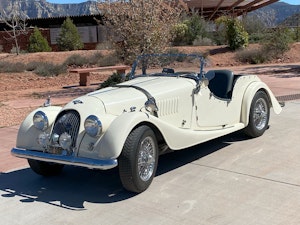
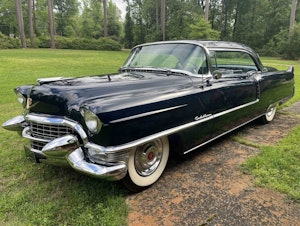

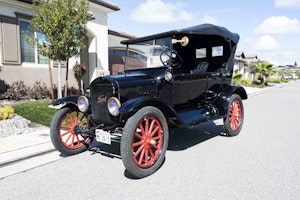
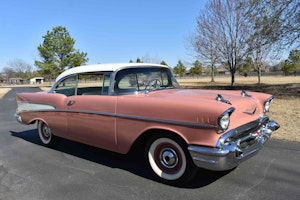


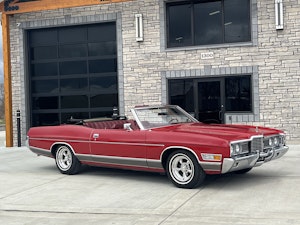
















I have a 1949 Nash 600 2dr Super Sedan with a Helen Rother interior. It is 75 years old and looks as if it were only 5. Quality materials throughout. Very tastefully done.
I find that when an article ends with a large overreach regarding the influence of one individual (coolers in a new truck’s centre console?) it has the effect of diminishing the point being made regarding the importance of that individual. Shall we credit the Dusenbergs with the modern horsepower wars?
I would have loved to seen direct comparison examples in the images. That would have helped make the point far better than anything else. The lovely red Rambler interior was a great addition but a comparison to a competitor interior (even if the Rambler itself didn’t have direct competitors) would have driven the point home in a more impressive manner. Not everyone is familiar with typical postwar automotive interiors.
Overall though, I really enjoyed the article and am always happy to see more about Nash, and Studebaker, two of my favourite American automobile companies.
An outstanding story. One could assume that Rother’s personal beauty gave her an artistic advantage, adding that to the practicality that a woman can bring to design and function. Too bad that she was only acknowledged after her passing. Though, you do not see many of these rare Air Flyte cars, I have seen a couple at the Pleasanton Good Guys show and I have admired them.
I really enjoyed this article and believe it would make a great movie. Has anybody ever wrote a book about Helene Rother?
The interior of that car is beautiful and bright. I love it.
Terrific and new story to many of us, Lyn. Many thanks.
Yours above and Andrew Newton’s look at the “Magnificent Andersons,” the nascent car collectors of early last century on the same day. Has Hagerty turned a new and fresh leaf from the usual CamaroMustang listicles?
An unexpected and welcome change. Good going.
Should the article have said that the ’50 Rambler was America’s first POSTWAR compact? It would have been more accurate. As a Studebaker nut, the thought of a very successful ’39-’46 Champion as a car in the direction of a compact comes to mind, and the ’33-’42 Willys 77 and Americar definitely qualifies.
But the article was a breath of fresh air (agreeing wholeheartedly with the remarks of Miles Hood, above). Thank you for broadening my knowledge of auto history.
Fascinating article about a true automotive pioneer. Ms. Rother deserved the posthumous praise she’s received while she was still here. And isn’t a strange coincidence that the article’s writer bears an uncanny resemblance to her subject?
Great article about one of the most overlooked independent car companies and their overlooked design influences. It is a shame that we are only talking about it 70 years later. Everyone knows Raymond Loewy but why are we not aware of the talents of Helene Rother. Thanks Hagerty for point this out to readers.
Has anyone noticed the strong resemblance between Helene Rother and the author of this article, Lyn Woodward (driving the Rambler in the photos)? It is uncanny, as if the author were somehow channeling Helene. This is a well-written, informative article!
I find the clock set in the Rambler dash interesting. This was 1950, I wonder when Porsche started the iconic dash clock placement in their cars ?
Maybe a borrowed styling element?
I really liked this article. That dashboard is stunning, simple elegance: nothing unnecessary, everything easy to see and adjust and all of it is stylish. (Actually is more-than-vaguely stirs memories of our youngest daughter’s Fiat 500 coupe). It’s easy to see someone at Nash looking at the exterior lines of this car several years later as an inspiration for the Nash Metropolitan; the lines to the future are easy to see.